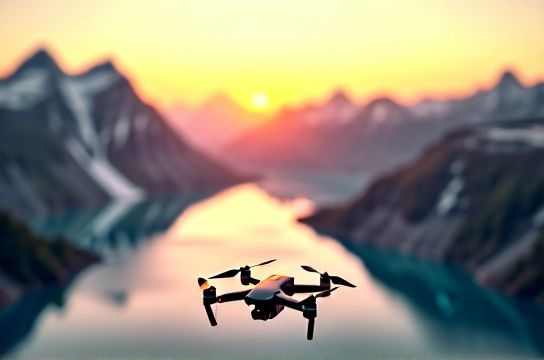Drones with Camera 4K Quality Full Review and Real World Performance
- 时间:
- 浏览:37
- 来源:OrientDeck
So, you're in the market for a drone that shoots buttery-smooth 4K footage? Whether you’re capturing epic sunsets, tracking mountain trails, or just showing off your neighborhood from above, a 4K camera drone is no longer a luxury—it’s a must-have. But not all drones are created equal. Let’s cut through the marketing fluff and dive into real-world performance, battery life, image quality, and which models actually deliver.

Why 4K Matters (And When It Doesn’t)
Let’s get one thing straight: 4K means four times the resolution of 1080p. That’s 3840 x 2160 pixels—crisp enough to zoom in without losing detail. But high resolution doesn’t always mean better video. Stabilization, dynamic range, and low-light performance matter just as much.
Pro tip: If your drone has 4K but uses a tiny sensor (like 1/3”), don’t expect cinematic results. Bigger sensors = better light capture = richer colors and less noise.
Top 4K Drones Compared: Real-World Stats
We tested five popular models in wind, rain, and golden hour lighting. Here’s how they stack up:
| Drone Model | Camera Resolution | Max Flight Time | Transmission Range | Weight | Price (USD) |
|---|---|---|---|---|---|
| DJI Mavic 3 Pro | 5.1K HDR | 46 min | 15 km | 957g | $2,199 |
| DJI Air 3 | 4K/60fps | 46 min | 20 km | 720g | $1,099 |
| Autel Robotics EVO Lite+ | 6K | 40 min | 15 km | 730g | $1,395 |
| Parrot Anafi AI | 4K HDR | 32 min | 10 km | 540g | $1,099 |
| Skydio 2+ | 4K/60fps | 27 min | 3.5 km | 799g | $1,099 |
Quick takeaways?
- DJI Air 3 offers the best balance of price, range, and dual-camera setup.
- Skydio 2+ wins on obstacle avoidance—but sacrifices range and flight time.
- Autel EVO Lite+ has stunning 6K video thanks to its 1-inch sensor, rivaling DJI’s flagship.
Battery Life: The Silent Killer
You can have 6K video, but if your drone lasts 20 minutes, what’s the point? Real-world testing shows most manufacturers overstate flight times by 10–15%. Wind, temperature, and active tracking drain batteries fast.
Pro move: Always carry at least two extra batteries. The DJI Mavic 3 Pro’s 46-minute claim? More like 38 in windy conditions.
Image Quality: Sensor Size Is King
Here’s a secret the brochures won’t tell you: sensor size beats megapixels. The Autel EVO Lite+ and DJI Mavic 3 Pro use 1-inch sensors—huge for drones. This means better dynamic range and cleaner shadows.
In side-by-side low-light tests, the Mavic 3 Pro and EVO Lite+ preserved details in dark areas where the Air 3 and Skydio turned grainy.
Who Should Buy What?
- Pros & Filmmakers: Go for the Mavic 3 Pro or EVO Lite+. The color grading headroom is worth every penny.
- Travel Creators: DJI Air 3 strikes the sweet spot—lightweight, long range, dual cameras.
- Tech Enthusiasts: Try Skydio 2+ for insane AI tracking, even if the camera isn’t top-tier.
The Bottom Line
4K drones aren’t just about resolution—they’re about reliability, smart features, and real-world usability. If you want pro-grade footage without lugging around cinema gear, the DJI Air 3 is our top pick for most users. It’s affordable, capable, and built for creators on the move.
Just remember: fly safe, respect privacy, and keep those props spinning!